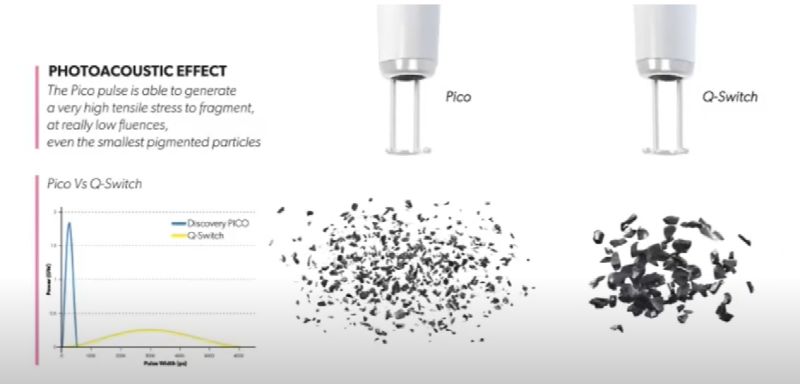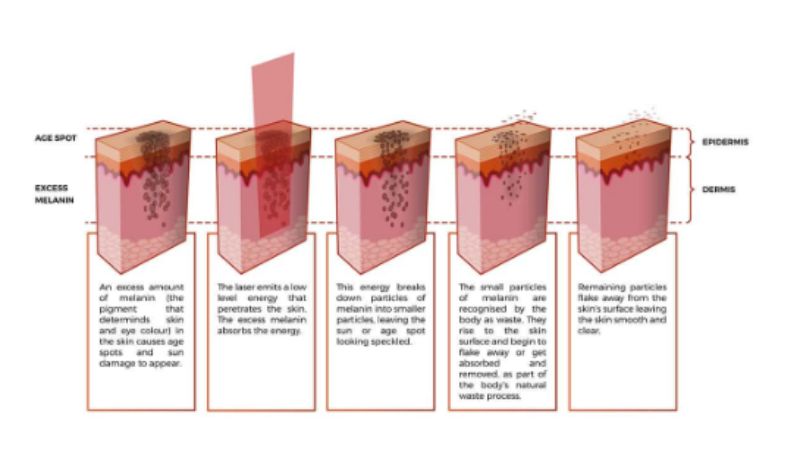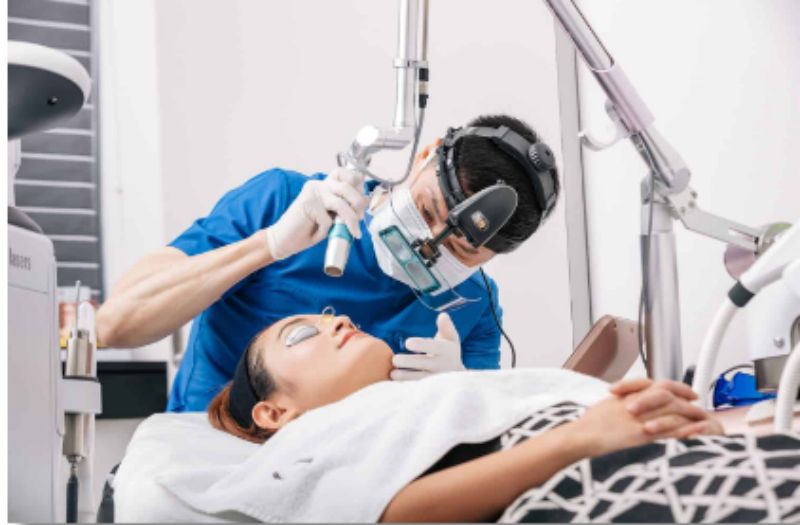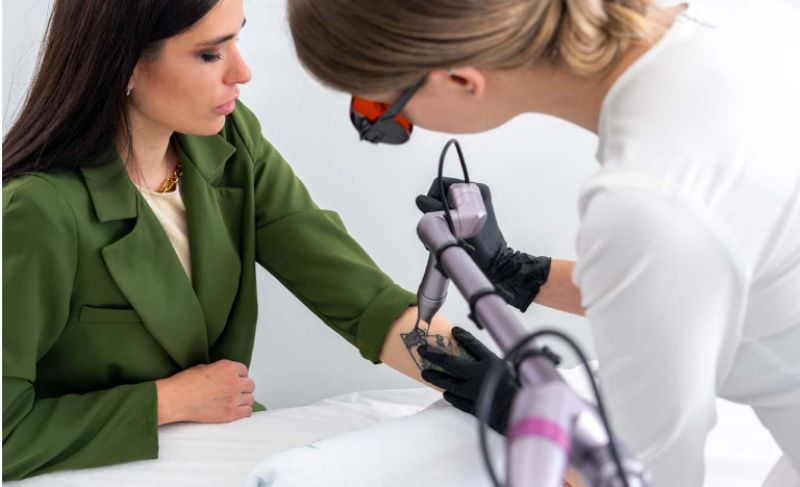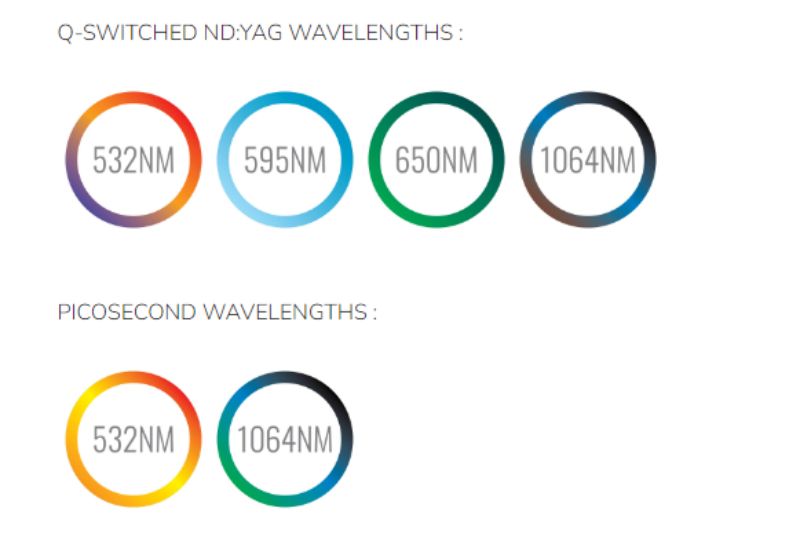How do Q-switched and picosecond laser treatments work?
Lasers work by bypassing the outer layers of the skin and penetrating down into the deeper layers to target unwanted melanin deposits. They essentially focus light sound and heat energy on the melanin, breaking down the pigment into smaller particles. These particles can then be removed by the body’s natural lymphatic system. The heat energy also boosts collagen production, helping to rejuvenate skin tissue. Lasers operate at different wavelengths or frequencies, each targeting a specific pigmentation (colour) and layer (or depth) of the skin.
When it comes to removing skin pigmentation, Q-switched lasers and pico lasers have become popular treatment options. When you’re considering laser treatments for skin pigmentation problems, you’ll naturally want to know which one is right for you.
What is a Q-switched laser?
Q-switched lasers are the common layman’s name for nanosecond (10-9 s) Nd YAG (1064 nm) lasers.Q-switching is actually a shuttering mechanism used to emit ultrashort pulses of laser light.
What is a picosecond laser?
Pico or picosecond lasers are a new development in that they are lasers with shorter pulse durations of 10-12 seconds, or one trillionth of a second. The first picosecond laser used for pigment removal was the 755nm Alexandrite laser.
Which is the better laser: a Q-switched laser or a picosecond laser?
So, which one should you choose?
According to different studies, people have come to different conclusions. Some studies have shown that picosecond lasers are more effective at breaking down tattoo ink than other types of lasers. It was found that 12 out of 16 patients got better removal results with a picosecond laser than with a nanosecond laser (Q-switched laser) [8]. However, other studies have found little competitive difference in results between the two lasers.
Both nanosecond lasers and picosecond lasers are safe and effective for hyperpigmentation removal. However, not all lasers are equal in terms of properties and capabilities. In fact, what works for some may not be the same for others. Therefore, it becomes important to first assess your specific skin pigmentation problem and the factors at play in order to choose the most appropriate laser.
Key findings
Lasers have been shown to safely and effectively treat pigmentation problems. However, it is important to note that each type of laser has a specific wavelength and pulse duration. Their associated properties make them more suitable for certain specific skin conditions or situations.
There is no ‘one-size-fits-all’ treatment as every pigmentation problem can be different. Having a wide range of different types of layers, as well as the knowledge, skill and experience in using different wavelengths to their full potential produces better and faster results.
Post time: Dec-13-2023

